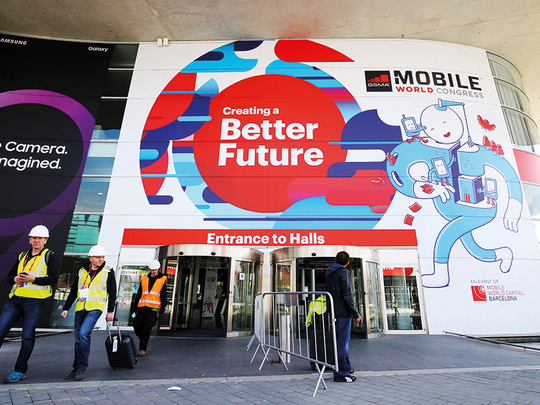
Barcelona: The Mobile World Congress is back for the 13th year in Barcelona to woo the world with the latest in mobile technology, artificial intelligence, connected cars, internet of things, virtual reality, augmented reality and robots.
More than 100,000 tech-savvy visitors are expected to take part from February 26 — March 1, 2018, at Fira Gran Via in Barcelona, with events, also taking place at Fira Montjuïc and La Farga L’Hospitalet.
More than 2,300 companies from more than 200 countries are participating, including brands such as Alibaba, AT&T, BMW, China Mobile, Cisco, Deutsche Telekom, Ericsson, Facebook, Google, HTC, Huawei, Intel, Lenovo, LG, Mercedes-Benz, Microsoft, NTT DOCOMO, Nokia, Oracle, Orange, Qualcomm, SAP, SEAT, SK Telecom, Telefónica, Toyota, Vivo, Vodafone, Xiaomi and ZTE, among others.
Even though it is considered the largest mobile show, some brands such as Huawei, LG, Oppo and HTC have opted out to have individual events for flagship launches, similar to Apple and Google. So, the biggest player at this year’s event is Samsung which will steal the limelight.
Huawei is holding a separate event for its P11 or P20 launch on March 27 in Paris and there is a chance that the Chinese firm will showcase new Windows two-in-one Matebook devices while LG is just showing an upgrade to last year’s model V30 with A1-powered camera instead of the G7 and some mid-tier smartphones on February 25th.
According to Ian Fogg, senior research director and analyst at IHS Markit, Samsung needs to take dual camera innovation into its mainstream Galaxy S flagships to be competitive with its major rivals. Its Galaxy Note 8 has dual cameras.
“Samsung is not alone in being slow to offer dual camera capabilities. Sony is yet to launch any model with a dual rear camera design. Google has opted for an impressive single camera design which offers background blur for portraits through innovative imaging software, matching Huawei, but one which lacks the advantages of a telephoto camera design which Apple has focused its design efforts upon,” he said in a statement.
However, he said that Samsung’s strongest markets for a new Galaxy S flagship will be in those countries where consumers most value large displays because Samsung’s Galaxy S+ models are most differentiated from its main rival Apple.
Upgrade targets
By looking at IHS Markit active installed base data sets which track smartphones that are currently in use, the most common Samsung flagship models in use are Samsung’s S7 and S7 Edge (2016) with a combined 5.26 per cent share, 2015’s Galaxy S6 with 1.78 per cent share, and the four year old Galaxy S5 with 1.4 per cent share of the active installed base.
Fogg said that these smartphone owners are Samsung’s main upgrade targets for its 2018 flagship smartphone models.
In dual cameras, he said that Samsung has lagged many of its key rivals. Of the top three smartphone makers, Huawei led the trend for the dual camera with early 2016’s Leica co-branded P9. Apple was a full year ahead of Samsung with its iPhone 7 Plus in 2017. Both companies offered background blur and other effects years ahead of Samsung who only added a second rear camera with the late 2017 Galaxy Note 8.
According to industry analysts, the smartphone industry has reached a stage where differentiation is very hard for manufacturers and life cycle of the devices is lengthening.
The industry will see some innovation around voice assistants, biometrics and camera features but analysts expect the next real innovation to take about five years. It will also see AI











